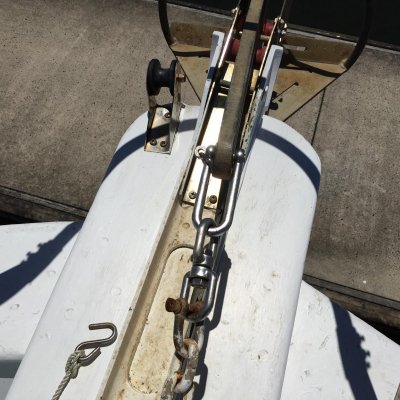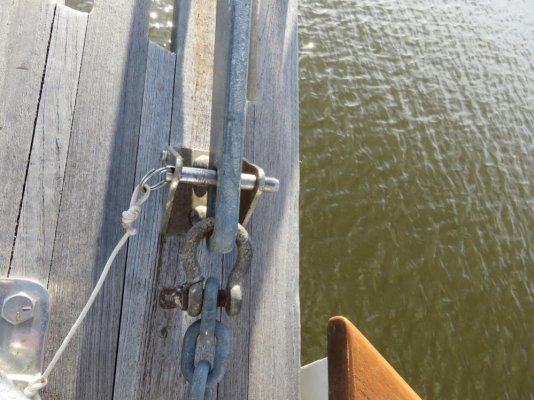Nomad Willy
Guru
View attachment 49365I have always thought that the bolt/pin should go through the hole or slot at the end of the anchor shank and the loop or eye of the shackle gets attached to the line, thimble or last chain link.
But many anchors have a slotted hole that is long enough to pass one of or either of the bolt/pin eyes w the eye going sideways through the slotted hole at the end of the anchor shank. Looks like the slot was intended for this purpose .. as I see no other possible reason for the anchor shank attach hole to be an elongated hole.
But I see knowledgeable TF members attaching the rode to the anchor w the pin through anchor shank and others w the hoop or eye through the shank. On my float where we moor our boat about 60% put the pin through the shank and 40% attach the rode at the pin and the hoop through the shank.
I always put the pin through the shank but there's a bit of doubt that this is correct. Fly stuff many will say ... but what is correct?
But many anchors have a slotted hole that is long enough to pass one of or either of the bolt/pin eyes w the eye going sideways through the slotted hole at the end of the anchor shank. Looks like the slot was intended for this purpose .. as I see no other possible reason for the anchor shank attach hole to be an elongated hole.
But I see knowledgeable TF members attaching the rode to the anchor w the pin through anchor shank and others w the hoop or eye through the shank. On my float where we moor our boat about 60% put the pin through the shank and 40% attach the rode at the pin and the hoop through the shank.
I always put the pin through the shank but there's a bit of doubt that this is correct. Fly stuff many will say ... but what is correct?
Attachments
Last edited:









